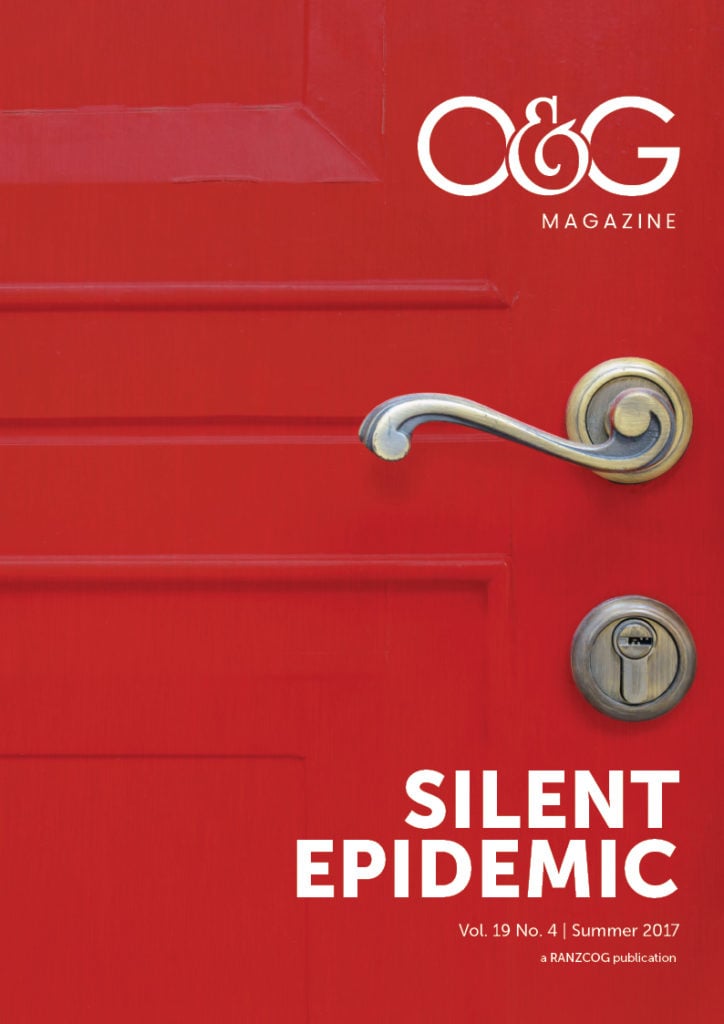In the last few years, an overwhelming amount of literature and research has been conducted on the issue of family and domestic violence (FDV). It can be acknowledged that FDV is a global issue that spans culture, religion, ethnicity, skin colour and migration status. However, as professionals, we often forget that our perception and understanding of what FDV is can be very different to those we work with. In this case, I am specifically referring to the culturally and linguistically diverse community (CaLD). What we do know is that domestic violence occurs at the same rate, if not higher, in the CaLD community.1 In 2015, ANROWS published a study on FDV in the immigrant community. They acknowledged that there are notably few studies that specifically examine the prevalence of family violence against immigrant and refugee women, with very little to no evidence available. Furthermore, Morgan and Chadwick reiterate that information on the prevalence of family and domestic violence in the CaLD community is minimised and very limited.2 This article will examine why information is so limited, and further examine the notion surrounding perception and knowledge on what FDV is. We simply cannot ignore the fact that culture plays an integral role in shifting and/or stagnating people’s perception around certain world views, including violence. We also cannot ignore that intimate partner violence is still the leading cause of death, disability and illness in women aged 15–44 in Australia.3 Understanding such complex concepts, which encapsulate the perception of violence, will enable us to provide a more culturally sensitive response to our clients and patients.
Widening our understanding of culture in relation to FDV is pivotal. Sokoloff and Dupont adopt a macro view of culture by stressing that we cannot deny the ‘real differences among battered women from diverse cultures’. They further stress that ‘culture is crucial to understanding and combating domestic violence, we cannot rest on simplistic notions of culture. Rather, we must address how different communities’ cultural experiences of violence are mediated through structural forms of oppression, such as racism, colonialism, economic exploitation, heterosexism, and the like’.4 One can therefore argue that cultural beliefs play an integral role in shaping a woman’s experience of abuse and what that abuse may mean to her. Gill et al5 however, take on a more micro view of this issue by arguing that much of the cause of domestic violence creates barriers to help-seeking by CaLD women, resting upon patriarchal values, predominantly about the status of women in some communities. From an enculturated sense, one can further argue that structural forms of oppression emerge from the everyday language and relationships between women and their intimate partners, extended family or others of influence, such as community and religious leaders, who in turn reinforce patriarchal values about the status of women, and ultimately judge women’s responses to FDV. This is one of the core differences between a Western understanding of violence to that of a different culture.
In many cultures around the world, FDV is not seen in the same light as we perceive it here in Australia. In 2009, Fisher noted that there is reluctance among immigrant and refugee women to conceptualise family violence in ways that emphasise aggression.6 In many cultures, family violence may only be perceived as physical, without encapsulating any other forms of abuse. For example, in research undertaken with West African women now living in Australia, Ogunsiji et al reported participants’ descriptions of family violence focused mainly on physical abuse.7 Controlling behaviours, financial and verbal abuse were not recognised as family violence, with sexual violence in an intimate partner relationship not mentioned at all. Additionally, in her research, Fisher illustrated that according to some women from the African community, ‘discipline’ was viewed as men’s duty towards children, and in some cases, their wives as well.8 Furthermore, Tonsing argues that studies among Asian and Middle Eastern immigrant communities in the United States have observed that it is culturally acceptable for men to use physical abuse as one form of discipline of women should they deviate from what is seen as their prescribed roles.9 Rees and Pease allude that while culture and patriarchal values act as causes of FDV, it is the structurally based inequalities, social dissonance and psychological stress that predominantly contribute to FDV.10The cause of what constitutes FDV in Western society is also often attributed to structural inequalities between men and women. This is the case for most societies around the world; however, for the CaLD community, perception about ingrained gender roles strongly differs. Araji and Carlson support this argument by extrapolating that ‘a society’s culture determines how supportive it will be of family violence and who it considers the appropriate administrators and recipients of abuse, most known societies are patriarchal, wherein men are given greater power, privilege, and control of women and children. In these societies, parents are also awarded authority over children’.11
Another pivotal point to note is the effect culture has on developing our sense of identity. In many migrant communities, individuals identify with a collective sense of identity as opposed to an individual one. Abu Odeh succinctly elucidates that ‘through an elaborate system of commands and prohibitions, girls “learn” their performance at a very young age. The culture guards itself against possible violations by devising sanctions less violent than death that are meant to preclude it, such as physical abuse, spatial entrapment, segregation, the institution of gossip and reputation, “because you are a girl, people will talk if you do this”, is rhetorically how women come to acquire their gendered subjectivity’.12 It can then be stated that migrant and refugee women may and will experience family violence from multiple perpetrators due to the collective notion of identity. This can include in-laws or community members. This is often the case for women from communities where wives are considered responsible for maintaining the family unity, or where norms of collectivism or subordination of the individual to the demands of the family or the head of the family is seen as normal.13 14 These factors have a consequential impact on CaLD women’s interpretation of what FDV means and is linked to women’s unique context of culture and patriarchal attitudes in a collective society. In turn, these factors provide a critical barrier for women to seek help, as they themselves do not categorise the violence that they are being subjected to as FDV. This is due to their cultural and social perception of what constitutes violence. If women only perceive physical violence as a form of domestic violence, they may be enduring other types of violence in a normalised manner as a result of their collective notion of identity.
As practitioners working with women from all walks of life, it can be difficult to understand someone else’s world view, as our perception may not support that of the patient. This can also be compounded by the fact that many women hold a sense of obligation to stay in a relationship/marriage due to religious and traditional beliefs as attitudes that were ingrained from an early age.15 In such clashes of cultural understanding, practitioners report not knowing how to respond to women from CaLD backgrounds who are experiencing violence. This is due to the practitioner’s desire to maintain cultural sensitivity.16
To effectively work with women from different cultures, it is important to understand their world view. It is equally important to note that factors such as their immigration status, employment and financial independence, their family and community ties, their limited level of knowledge of the law and their own rights are all barriers that hinder them from seeking support. Additionally, women highly value their honour, status and reputation in a way that is tied to their family due to their collective notion of identity. Taking all of the above into consideration will enable us to sensitively and effectively work with women from different cultural backgrounds.
References
- Vaughan C, Davis E, Murdolo A, et al. Promoting community-led responses to violence against immigrant and refugee women in metropolitan and regional Australia: The ASPIRE Project. 2015. ANROWS. Sydney.
- Morgan A, Chadwick H. Key issues in Domestic Violence: Summary paper. Australian Institute of Criminology (AIC). Canberra. 2009:7.
- VicHealth. The health costs of violence: measuring the burden of disease caused by intimate partner violence: a summary of findings. 2004. Melbourne: Department of Human Services.
- Sokoloff N, Dupont I. Domestic violence at the intersections of race, class, and gender: challenges and contributions to understanding violence against marginalized women in diverse communities. Violence Against Women. 2005:11(338):38-64.
- Gill A, Begikhani N, Hagu G. ‘Honour’-based violence in Kurdish Communities. Women’s Studies International Forum. 2012;35:75-85.
- Fisher C. The exploration of the nature and understanding of family and domestic violence with the Sudanese, Somailan, Ethiopian, Liberian and Sierra Leonean communities and its impact on individuals, family relations and community settlement: Research report. 2009. Perth: Association for Services to Torture and Trauma Survivors.
- Ogunsiji O, Wilkes L, Jackson D, Peters K. Suffering and smiling: West African immigrant women’s experience of intimate partner violence. Journal of Clinical Nursing. 2012:21(11-12):1659-65.
- Fisher C. Changed and changing gender and family roles and domestic violence in African refugee background communities post-settlement in Perth, Australia. Violence Against Women. 2013:19(7):833-47.
- Tonsing JC. Domestic Violence: Intersection of Culture, Gender and Context. Journal of Immigrant and Minority Health. 2016;18(2):442-6.
- Rees S, Pease B. Domestic Violence in Refugee Families in Australia. Journal of Immigrant and Refugee Studies. 2007:5(2):1-19.
- Araji SK, Carlson J. Family violence including crimes of honor in Jordan: Correlates and perceptions of seriousness. Violence Against Women. 2001:7(5):586-621.
- Abu-Odeh L. Honour killings and the construction of gender in Arab societies. American Jounral of Comparitive Law. 2010;58:911-52.
- Vaughan C, Davis E, Murdolo A, et al. Promoting community-led responses to violence against immigrant and refugee women in metropolitan and regional Australia: The ASPIRE Project. 2015. ANROWS. Sydney.
- Salter M. Multiperpetrator domestic violence. Trauma, Violence & Abuse. 2014;15(2):102-12.
- Allimant A, Ostapiej-Piatkowski B. Supporting women from CALD backgrounds who are victims/survivors of sexual violence: challenges and opportunities for practitioners. 2011. Australian Centre for The Study of Sexual Assault.
- Ostapiej-Piatkowski B, Anne S. Issues in good pratctice: multicultural identity and working across cultures in responding to violence. Australian Family and Domestic Violence Clearinghouse Newsletter. 2009;36:4-5.






Leave a Reply